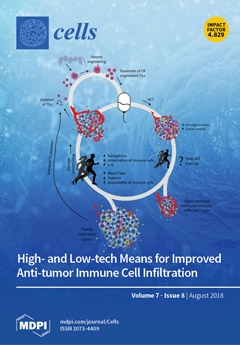During strong parallel fiber stimulation, glutamate released at parallel fiber-Purkinje cell synapses activates type-1 metabotropic glutamate receptor (mGluR1) to trigger a slow excitatory postsynaptic current (sEPSC) in cerebellar Purkinje neurons. The sEPSC is mediated by transient receptor potential canonical 3 (TRPC3) channels. Often co-localized with mGluR1 in Purkinje neuron dendrites are type B γ-aminobutyric acid receptors (GABA
BRs) that respond to inhibitory synaptic inputs from interneurons located in the molecular layer of cerebellar cortex. It has been shown that activation of postsynaptic GABA
BRs potentiates mGluR1 activation-evoked sEPSC in Purkinje cells, but the underlying molecular mechanism remains elusive. Here we report that the augmentation of mGluR1-sEPSC by GABA
BR activation in Purkinje neurons is completely absent in TRPC3 knockout mice, but totally intact in TRPC1-, TRPC4-, and TRPC1,4,5,6-knockout mice, suggesting that TRPC3 is the only TRPC isoform that mediates the potentiation. Moreover, our results indicate that the potentiation reflects a postsynaptic mechanism that requires both GABA
BRs and mGluR1 because it is unaffected by blocking neurotransmission with tetrodotoxin but blocked by inhibiting either GABA
BRs or mGluR1. Furthermore, we show that the co-stimulation of GABA
BRs has an effect on shaping the response of Purkinje cell firing to mGluR1-sEPSC, revealing a new function of inhibitory input on excitatory neurotransmission. We conclude that postsynaptic GABA
BRs regulate Purkinje cell responses to strong glutamatergic stimulation through modulation of mGluR1-TRPC3 coupling. Since mGluR1-TRPC3 coupling is essential in cerebellar long-term depression, synapse elimination, and motor coordination, our findings may have implications in essential cerebellar functions, such as motor coordination and learning.
Full article






